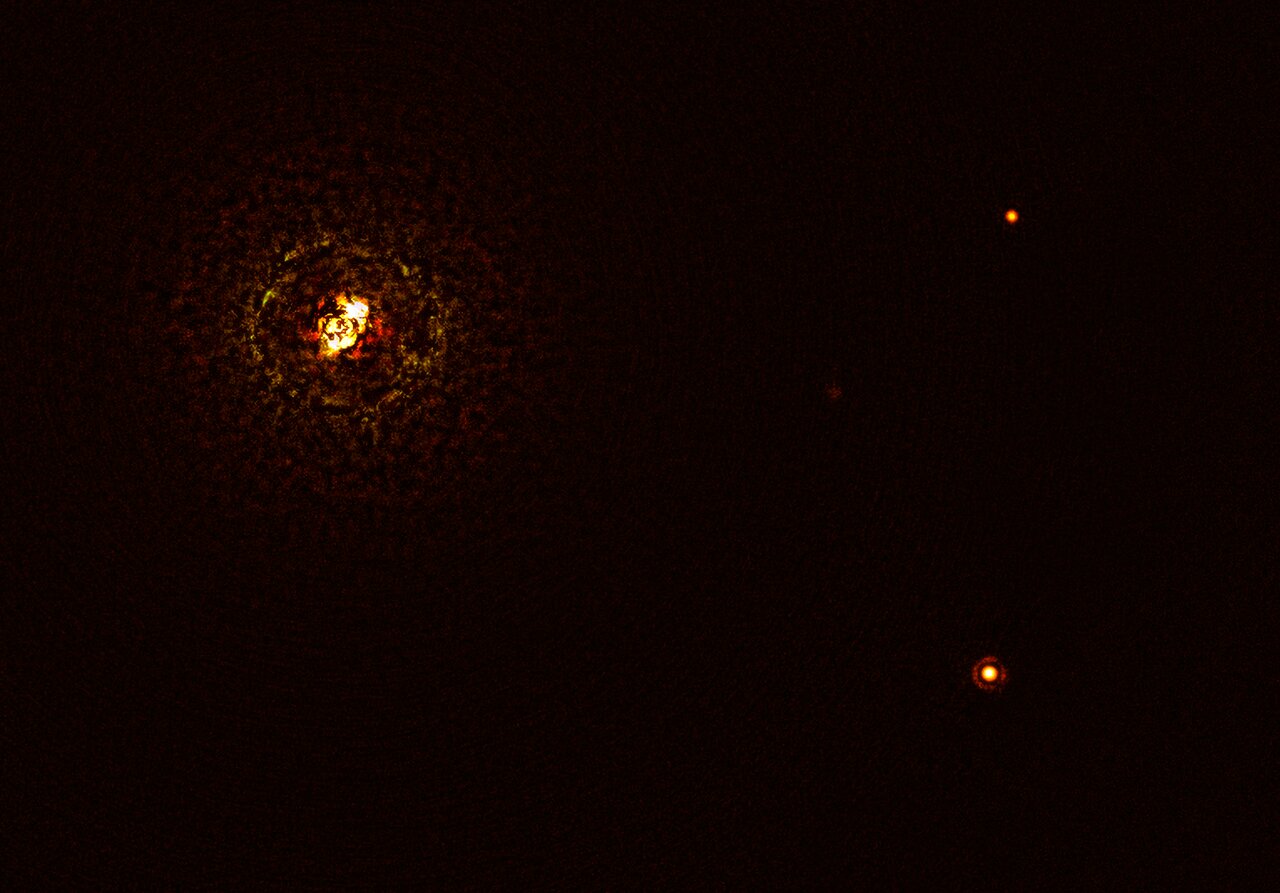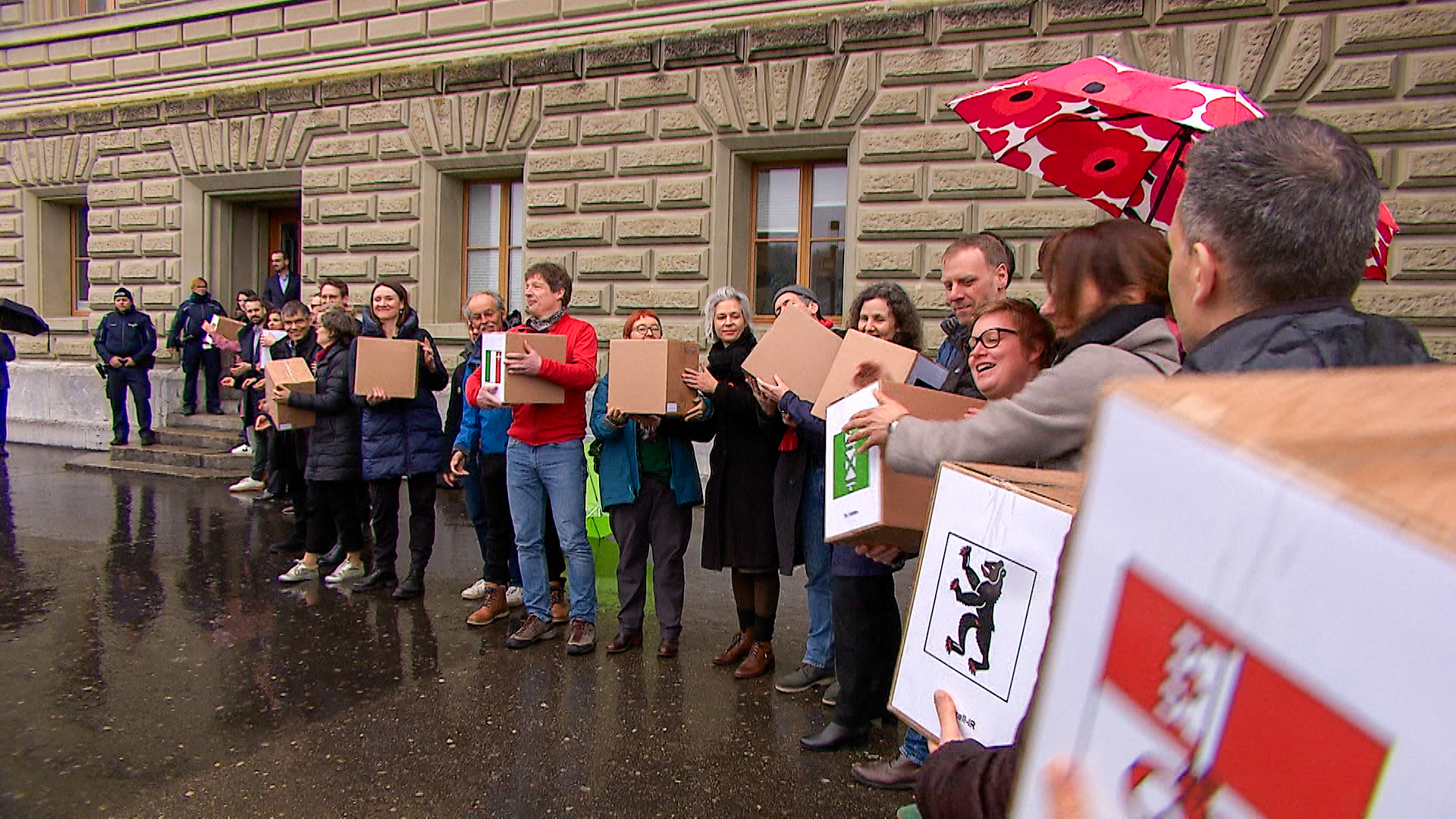
By Jupiter! Researchers discover surprising new gas giant

An international team of scientists, including several Swiss, have captured an image of a giant gaseous exoplanet orbiting two massive suns in a distant solar system, a configuration that researchers until now thought might be impossible.
The planet was spotted in “b Centauri”, a solar system situated around 325 light-years away from earth. b Centauri consists of a pair of stars, each at least six times the mass of our sun and three times as hot. “b Centauri b”, meanwhile, the newly-discovered gas giant, is around 10 times the mass of Jupiter and is one of the biggest exoplanets ever to have been found.
It’s also something of a surprise. “So far, comparatively few planets have been discovered around stars with more than 2 solar masses [i.e. more than twice the size of our sun],” said Professor Sascha Quanz in a press releaseExternal link published by the Swiss PlanetS research group.
Previous studies concluded that such a scenario would be complicated by the sheer gravitational pull of massive suns, which suck in all available matter around, as well as emitting high temperatures which burn up everything else, said Quanz, head of the Exoplanets and Habitability Group at the federal technology institute ETH Zurich.

More
‘There is life elsewhere in the universe’
In the case of “b Centauri b”, this problem seems to have been solved by an extremely wide orbit: the exoplanet revolves around its pair of suns at a distance around 100 times greater than that between Jupiter and the sun in our solar system.
“This large distance from the central pair of stars and the associated reduced irradiation could have been the key to the planet’s survival,” said another study co-author Lucio Mayer from the University of Zurich. Mayer added however that it’s still unclear how the planet came to be formed in the first place.
Big telescopes
The discovery, made using the so-called Very Large TelescopeExternal link (VLT) operated by the European Southern Observatory (ESO) in the Atacama desert in Chili, has “completely changes the picture about massive stars as planet hosts”, said lead study author Markus Janson from the University of Stockholm.
The researchers intend to carry on with more detailed observations once the ESO’s Extremely Large Telescope (which, it hopes, will provide images 16 times sharper than those from the Hubble Space Telescope) is up and running within the coming decade.
The study was published on Wednesday in the Nature scientific journalExternal link.

In compliance with the JTI standards
More: SWI swissinfo.ch certified by the Journalism Trust Initiative





























You can find an overview of ongoing debates with our journalists here . Please join us!
If you want to start a conversation about a topic raised in this article or want to report factual errors, email us at english@swissinfo.ch.